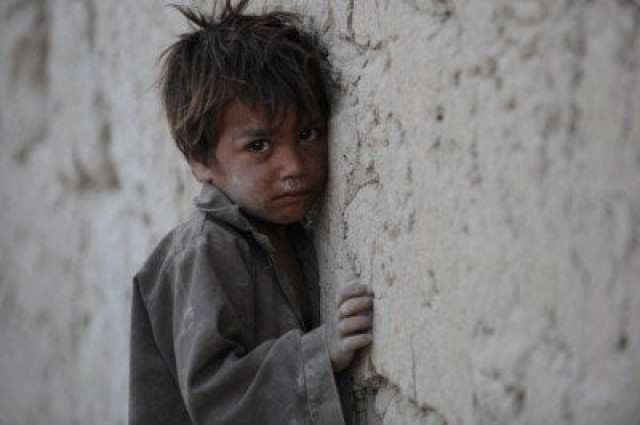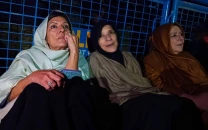Malnutrition in Sindh: Over 57% children under-5 stunted
Stats show provincial government’s indifference to child and mother health issues

Stats show provincial government’s indifference to child and mother health issues. PHOTO: FILE
The Society for the Protection of the Rights of the Child cited data compiled by the Pakistan Emergency Food Security Alliance (PESFA) in its report titled ‘Children on the Move’.
Thirty-five per cent of children below the age of five are severely stunted. “This is alarming and worrisome,” it said in the report, a copy of which was obtained by The Express Tribune.
Statistics also clearly demonstrated the provincial government’s obliviousness to addressing child and mother health issues.
Citing statistics compiled by the World Health Organisation (WHO), the report showed that the incidence of stunting in children in Tharparkar was recorded at 45.9 per cent. The findings were corroborated by a nutrition and mortality survey that Unicef conducted in Tharparkar, Sanghar and Kamber-Shahdadkot districts of Sindh.
According to the survey, the incidence of Global Acute Malnutrition (GAM) in Tharkarpar was 22.7 per cent followed by Sanghar at 16 per cent and Kamber-Shadadkot at 13.8 per cent.
According to the Nutrition and Mortality Survey conducted by HANDS with PDMA support, at least 269 children (aged 0-5 years) were found to be underweight out of 627 children surveyed in Tharparkar district.
Of the total, 149 boys and 120 girls were categorised as underweight.
Dr Baseer Khan Achakzai, the director of the nutrition wing at the federal ministry of health services, said: “Among all other provinces, Sindh is spending the highest amount of money for addressing the malnutrition issues, but no significant improvement has so far been witnessed.”
He said a three-year $20 million plan for addressing malnutrition was implemented in March last year in Sindh with technical assistance of the federal health ministry in partnership with international donor agencies.
Another Rs4 billion project – ‘Nutrition Support Programme’ – was also implemented by the World Bank in collaboration with the Sindh government in nine districts of the province, he said.
He said that internationally a nutrition emergency was declared whenever acute malnutrition rate in any region declined by up to 15 per cent.
“In Sindh, the acute malnutrition rate has touched 23 percent, but no serious action has yet been taken,” said Dr Achakzai.
Dr Suhail Shaikh, who is the Deputy Programme Manager of the Sindh Nutrition Support Programme, said that the provincial government was aware of the alarming situation.
He said that an ‘Accelerated Action Plan for Stunting Reduction in Sindh’ would be implemented in 29 districts this year to address the malnutrition issue, adding that the plan would be implemented in collaboration with agriculture, education and social protection departments.
“The plan will cover the entire Sindh and will be implemented in a phase-wise manner,” he said.
After Tharparkar, the incidence of malnutrition is most acute in Badin, Umerkot, Sanghar and Jaccobabad, he said.
Citing another survey conducted by Sindh’s health department in collaboration with UNICEF in 2014-15, he said that the stunting rate in the province was 48 per cent.
Head of Sparc’s Sindh chapter Kashif Bajeer said: “In most rural areas (of the province) neither fresh fruits and vegetables nor meat is available.”
“There are several villages where people eat mutton once or twice a year,” he said.
He also said that people across the province were also deprived of clean drinking water.
Published in The Express Tribune, February 12th, 2017.



















COMMENTS
Comments are moderated and generally will be posted if they are on-topic and not abusive.
For more information, please see our Comments FAQ